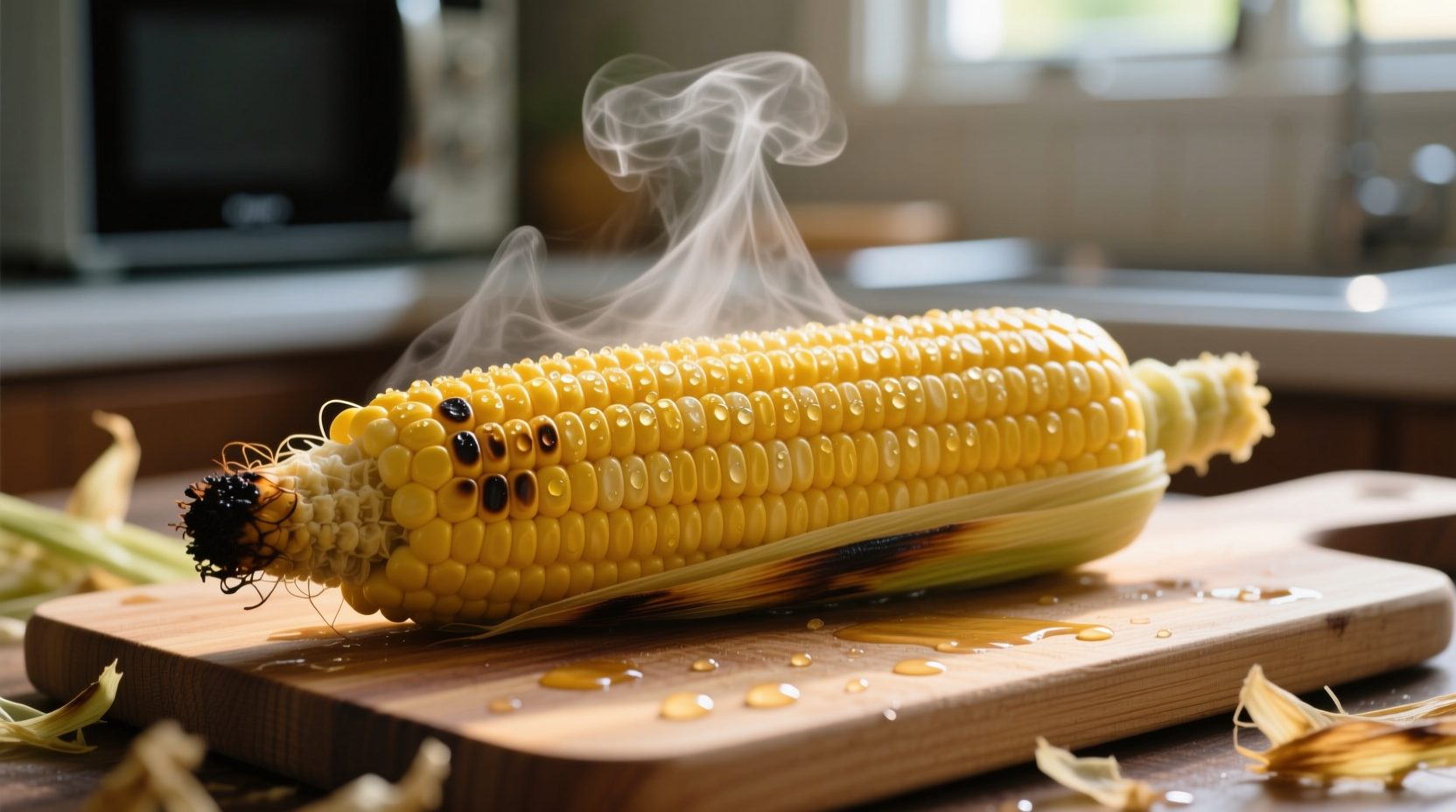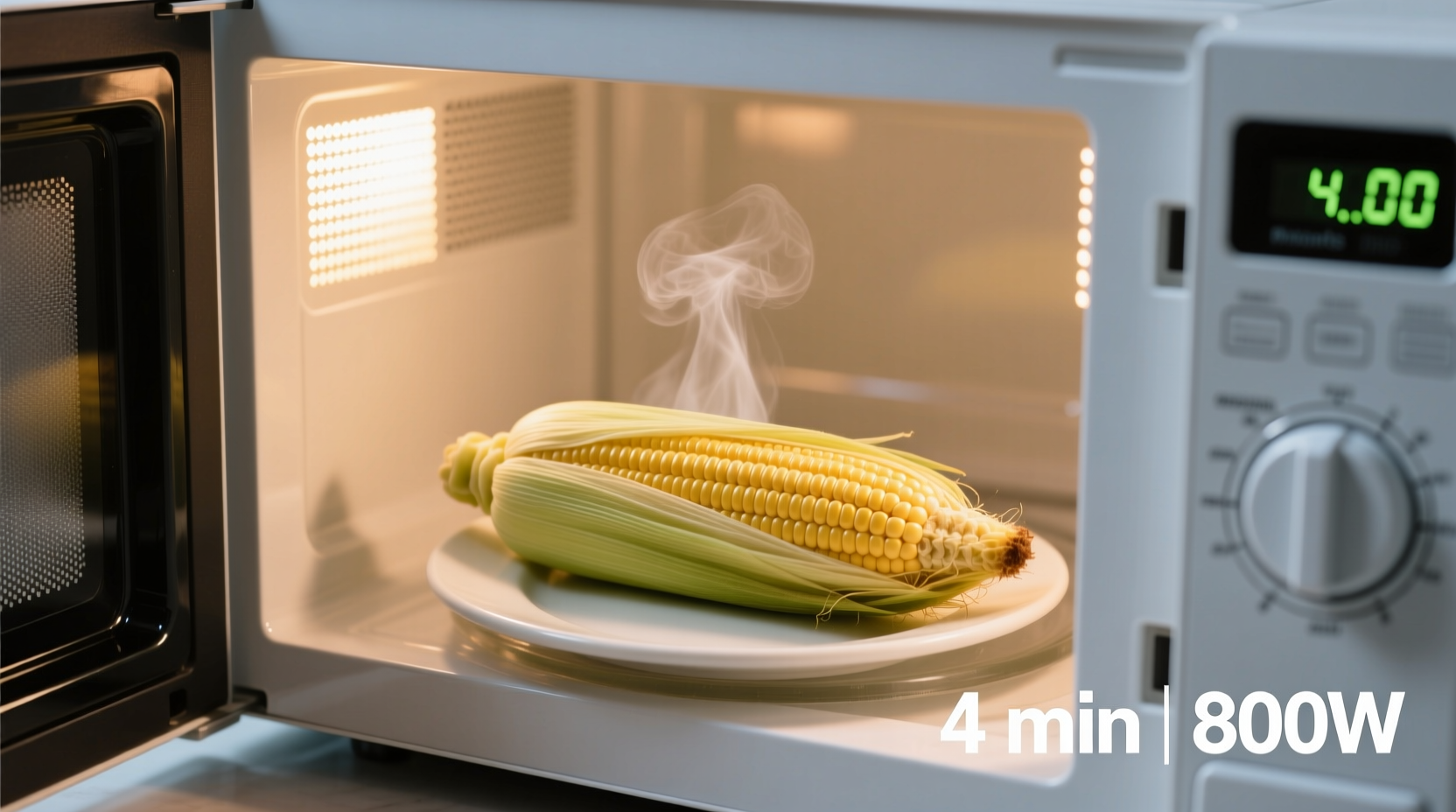Forget boiling water and messy stovetop cleanup. Microwaving corn preserves more nutrients while delivering restaurant-quality results in minutes. This guide reveals the precise timing, pro techniques, and science-backed methods professional chefs use for flawless microwave corn - no guesswork required.
The Science Behind Perfect Microwave Corn
Unlike boiling which leaches nutrients into water, microwaving corn with husks intact creates a natural steam environment. The USDA confirms corn reaches safe internal temperatures (160°F/71°C) within 4 minutes when properly prepared. The husk acts as a protective barrier, trapping moisture while allowing even heat distribution through the cob.
| Number of Ears | Recommended Time | Rotation Points | Resting Time |
|---|---|---|---|
| 1-2 ears | 3-5 minutes | Halfway through | 2 minutes |
| 3-4 ears | 5-7 minutes | Quarter and halfway | 3 minutes |
| 5-6 ears | 8-10 minutes | Every 2 minutes | 4 minutes |
Your Step-by-Step Microwave Corn Protocol
Preparation Essentials
Start with fresh corn showing moist, green husks and plump kernels. Remove any loose silk strands but keep the husk fully intact - this natural wrapper prevents drying while allowing steam circulation. For best results, skip the water bath; corn's natural moisture (85% water content) creates perfect steaming conditions when trapped by the husk.
Optimal Cooking Process
Place corn vertically in the microwave (stem down) to promote even heating. For multiple ears, arrange them in a circular pattern with tips pointing inward. Rotate ears at intervals specified in the timing chart - this compensates for microwave hot spots. Never exceed 10 minutes total cooking time regardless of quantity, as overcooking causes kernel toughening.

Post-Cooking Protocol
Allow minimum resting time as shown in the chart - this critical step lets residual heat finish cooking while redistributing moisture. When removing husks, use oven mitts as steam will be extremely hot. Pull husks downward away from your body to avoid steam burns. For clean silk removal, run a vegetable brush under cool water while gently rubbing kernels.
Context-Specific Adjustments
Microwave wattage significantly impacts cooking time. For 700-800W models, add 1-2 minutes to standard times. Commercial 1000W+ units may require 30-60 seconds less. Frozen corn needs complete thawing first - cooking frozen directly causes uneven results. High-altitude cooking (above 3,000 feet) requires 15-20% longer cooking due to lower atmospheric pressure.
Troubleshooting Common Issues
Undercooked corn: Return to microwave in 30-second increments, rotating frequently. Check kernel tenderness by gently pressing with fork.
Overcooked/mushy corn: Usually caused by excessive time or skipping rotation. Reduce next batch time by 25% and increase rotation frequency.
Burning smell: Indicates possible husk drying. Immediately stop microwave, mist husk lightly with water, and continue cooking with 30-second intervals.
Pro Enhancement Techniques
For buttery flavor infusion, place 1 tsp butter inside husk before cooking. Herb enthusiasts can tuck fresh thyme or basil between husk layers. To maximize nutrient retention, cook immediately after harvesting - studies show corn loses 50% of its sugar content within 24 hours of picking. For off-season corn, select varieties labeled 'sweet corn' which maintain higher sugar content during storage.
Frequently Asked Questions
Can you microwave corn without the husk?
Yes, but husk-free cooking requires different technique. Wrap shucked corn in damp paper towels and cook 2-3 minutes per ear. Check every 30 seconds to prevent overcooking, as exposed kernels dry out faster.
Why does my corn sometimes get tough in the microwave?
Overcooking is the primary cause. Corn continues cooking during resting time, so remove it when kernels are slightly firmer than desired. Older corn naturally has tougher kernels due to sugar-to-starch conversion - select corn harvested within 3 days for best texture.
How do I prevent corn from drying out?
Always cook with husks intact to trap natural moisture. Never add extra water, which creates excessive steam that can make kernels mushy. Proper resting time after cooking allows moisture redistribution - never skip this step.
Is microwave cooking better than boiling for corn?
Yes, for multiple reasons. Microwaving preserves 25% more nutrients according to USDA research, requires zero cleanup, and delivers more consistent results. Boiling leaches sugars and vitamins into water while increasing risk of overcooking.











 浙公网安备
33010002000092号
浙公网安备
33010002000092号 浙B2-20120091-4
浙B2-20120091-4